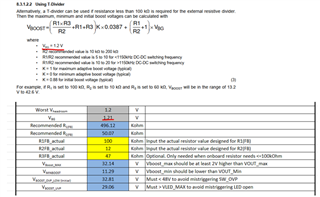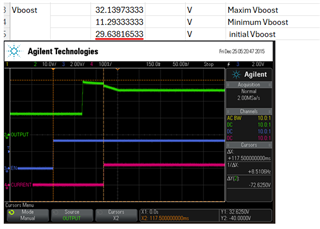Tool/software:
Hi team,
I have two inquiries about the calculation tool parameters of LP8869. Please help me look at the following questions, thank you!
1. The switching frequency calculated by the tool based on 8867-9 (c) is different from the result calculated based on the datasheet. Why is this?

2. The VBG in the manual is 1.2v, why is the value defined in the tool 1.21v? Is this a typo or is there some other consideration?

3.The calculated initial voltage value does not match the measured value




